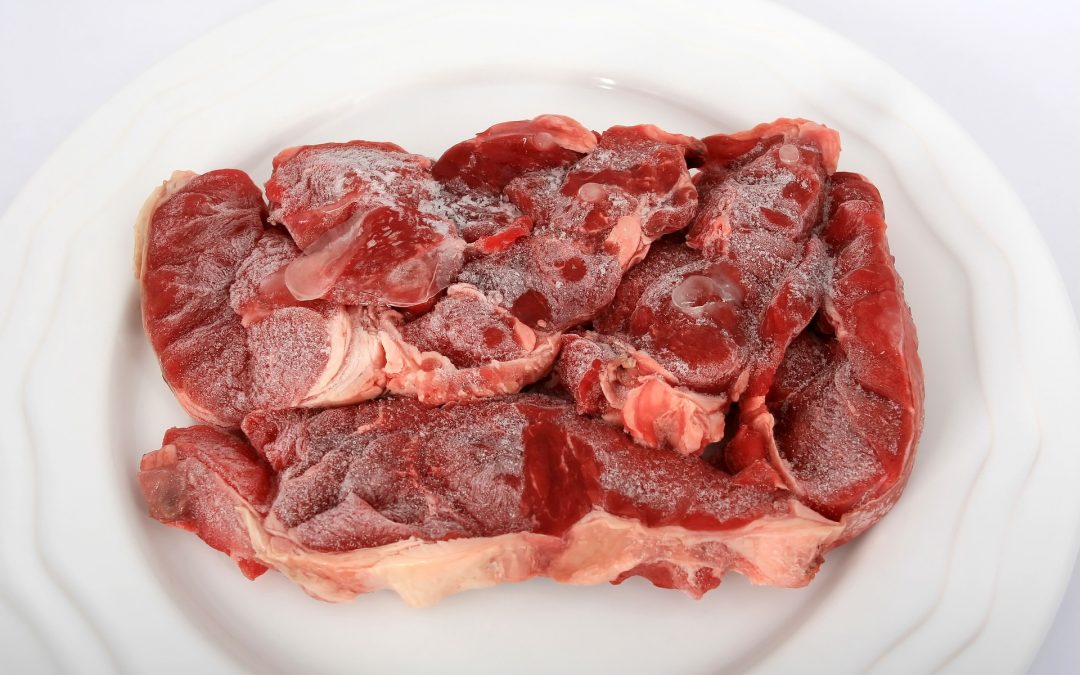Get your steak grill ready without sacrificing flavor, texture, or your health.
Your kids called, and they are bringing a friend for dinner. Normally, an extra serving of pasta or two extra tacos would be no big deal.
But tonight, you had planned to cook steaks with grilled vegetables, so there’s just one problem: You are short one steak, and the clock is ticking.
Thankfully, you can still get the beef on the grill with time to spare as long as you use this no-fail steak-thawing method.
The Fastest Way to Thaw a Steak Safely
The Sous Vide Method
In all situations, the best way to thaw a steak is in a refrigerator. The meat will stay at a constant, cold temp while it defrosts. This keeps it at a safe temperature, and you won’t run the risk of becoming ill from bad bacteria.
But in the event you don’t have time for this lengthy process (it typically takes 24 to 36 hours), you can speed things up with this method:
1. Grab a steak from your freezer, and place it in a zip-top bag. Squeeze out as much air as possible, and seal the bag.
2. Place the steak in a pot or container with your sous vide attached. Fill the pot or container with cool water, not hot or even warm water. Cool water is safest. The higher the temp climbs, the closer you get to the danger zone, or when bacteria growth accelerates.
3. Leave the steak in the water for 30 minutes with your sous vide set to 70 degrees F. After that half hour, check the steak. If it’s not completely thawed, add another 15 miniutes then check again.
4. Remove the bag from the water. Open the seal, and remove the steak. Season and cook the meat just as you typically do.
No Sous Vide No Problem
1. Grab a steak from your freezer, and place it in a zip-top bag. Squeeze out as much air as possible, and seal the bag.
2. Place the steak in a large bowl. If you’re thawing more than one steak, you can speed up the process by giving each steak its own bowl. Again, fill the bowl or bowls with cool water.
3. Leave the steak in the water for 30 minutes. Place a spatula or wooden spoon on the meat to keep it submerged. After that half hour, check the steak. If it’s not completely thawed, empty the water, and fill the bowls with fresh cool water. Because the water’s temperature is cool, you don’t have to worry about discoloration of the meat, and it’s not hot enough to start the cooking process.
Plan for about 30 minutes per pound of meat. Thinner steaks will be fully thawed in 30 minutes. Thicker ribeyes or filets might need more time. You can speed up the process by separating individual pieces from each other when they’re thawed enough to pry apart.
4. Remove the bag from the water. Open the seal, and remove the steak. Season and cook the meat just as you typically do.
Which fast thawing methods don’t work?
While your microwave has a defrost option, it’s best to not use it when you’re trying to get a steak thawed. The heat from the appliance will thaw the meat, but it can also quickly begin cooking the steak. This will affect the meat’s color (it’ll turn gray) and the texture (it could become chewy). Use this method only as a last resort.
Certainly do not leave the steak on the counter at room temperature for any length of time. Even cool rooms like a basement or garage are far too warm. The outside portions of the meat will rapidly warm to the danger zone—41°F to 135°F—and dangerous bacterial growth my start. This could lead to food poisoning.
Some cooks recommend place an unwrapped steak in a bowl of water with a steady stream running into it. This will certainly help keep the water around the steak at a constant cool temperature—and prevent it from reaching the danger zone—but it also means all the juices a steak naturally releases while thawing will be lost for good. Ultimately, that could mean you have a dry, stringy piece of meat.


